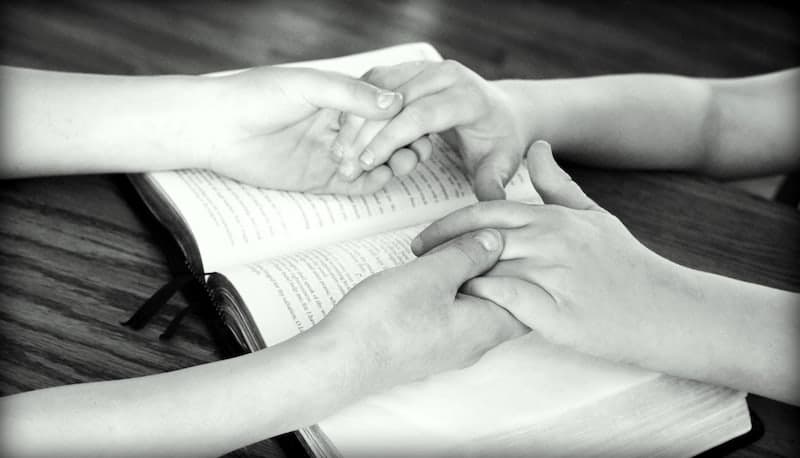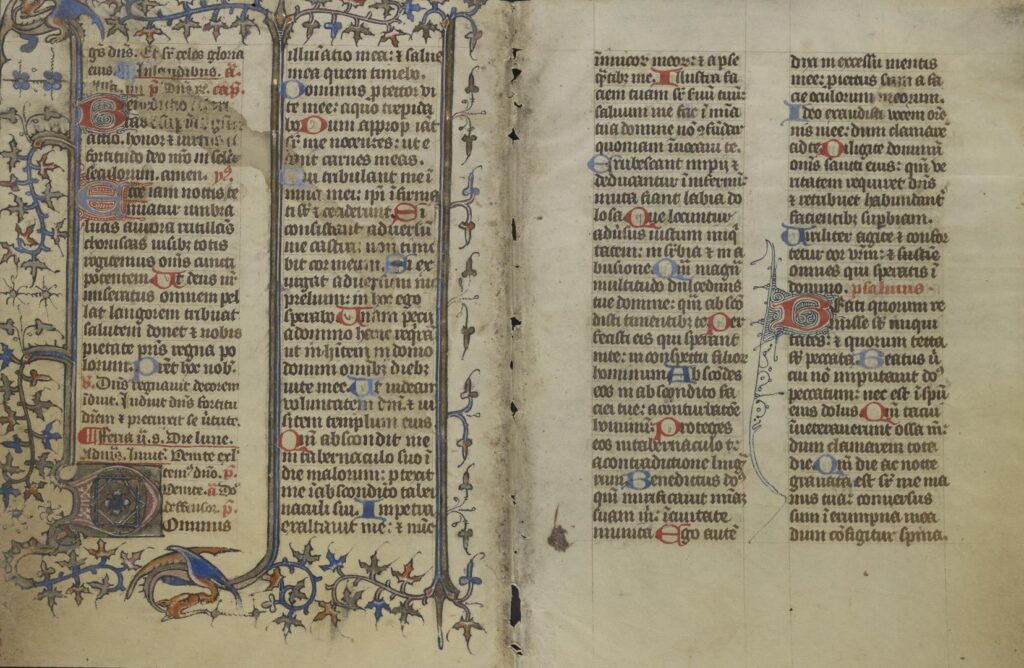Prayer is an integral practice for adherents of many faiths around the globe. In its broadest sense, prayer is a way to either communicate with and experience the divine, or explore the spiritual side of humanity. It can be performed audibly or silently, and both corporately and individually, as a way to connect with God, others, and ourselves.
The Role of Prayer in Various Faith Traditions
The forms and functions of prayer have evolved over the centuries and vary widely among the major faith traditions, but serve a particular role in each.
Christian Prayer
In the Christian faith, prayer is an act of worship and comprises both listening to and speaking with God. The most famous example is The Lord’s Prayer, found in Matthew 6:9-13 in the New Testament. In this passage, Jesus is instructing his disciples on how to pray, and the prayer incorporates elements of praise, thanksgiving, and supplication for one’s individual needs and the needs of others.
Prayer is performed in corporate settings, such as by a pastor or minister in a church service, but also within small groups of Christians who meet on a regular basis. Christians are also encouraged to pray individually, on their own time, and in their own private way. Meditation and contemplation are considered forms of reflective prayer. The purpose of prayer in the Christian church is to know and experience God so that both the inner and outward lives are transformed to be more like Jesus.
Variations between traditions
Differences exist in the practice of prayer even among the various Christian denominations. In evangelical circles, many prayers are composed, whether corporate or personal, at the moment, meant to reflect an intimate relationship with God. There are no set times, except that prayer does occur in fixed group gatherings. Other denominations prefer to have a particular structure and format for prayer, by keeping certain hours for prayer and following a liturgical calendar. In the Catholic Church, for example, laypeople are encouraged to pray according to the Liturgy of the Hours, which contains seven fixed times throughout the day to recite set prayers from a lectionary – a book containing readings and prayers for every day of the year. It is important to note that whether Christian churches follow a more traditional version of prayer, such as liturgy, or extemporaneous prayer, it is a personal and congregational preference rather than a rule.
Judaism
In Judaism, prayer is referred to as “service of the heart” – an interpretation from the Talmud based on Deuteronomy 11:13. The goal in the Jewish faith is to create a relationship with God. They seek to change the heart and mind of the one praying and to effect change in the world. Like Christianity, Jewish prayer includes elements of adoration, praise, giving thanks, and requests for oneself or others. In Jewish tradition, prayers are recited three times a day. Shacharit is in the morning, Mincha in the afternoon, and Maariv in the evening. Additional prayers are offered on holy days and on Shabbat, the Sabbath. Following a more liturgical fashion, prayers are recited from the Jewish book of prayer, called a siddur. Public prayer in the synagogue, with a minimum of ten adults present, is the preferred method, but individual prayers are also encouraged.
Congregations vary in their requirements for public meetings. In many synagogues, it is considered a sign of respect for both men and women to wear a head covering. Some also wear prayer shawls or wear phylacteries, depending on the occasion. Orthodox or more conservative congregations are more likely to adhere to these customs. More progressive congregations may deem these practices optional. Regardless of each congregation’s practices, the prayers recited in synagogue do not deviate – Judaism places great importance on the sacred nature of the prayers written in the siddur and believes that they unite the Jewish people to each other and to God.
Islam
In Islam, prayer is one of the five pillars, or major tenets, of the faith. It is considered the most important act of worship. As such, it is required in daily practice for all Muslims. Prayer in the Islamic faith “brings the individual face to face with God.” A supplicant can then express gratitude, love, and respect, and present requests.
Ritual prayer, performed five times a day, is known as the salah, sometimes salat, and is recited entirely in Arabic. The salah consists of prefixed prayers, although there are more informal prayers that can be prayed individually. Similarly to Judaism, private prayer is encouraged. However, Muslims are also expected to participate in the ritual prayers in the mosque with others. Calls to worship prior to the five appointed times are carried out by the mosques to remind the people to pray. Jumu’ah, or the Friday congregational prayer, is the main communal gathering for Muslims.
Muslims perform a ritual cleansing prior to prayer, in order to prepare their hearts and bodies. The cleansing is two-fold: the first is najasah, to wash away physical impurities such as contact with unclean materials such as alcohol, and the second is hadath, for personal impurities such as bodily fluids. Both are performed by ablution; that is, cleansing with water. Failure to perform ablution prevents Muslims from taking part in the prayer. Praying, Muslims must face in the direction of Mecca. According to the prescribed prayers, there are movements each worshiper performs, including sitting, bowing, and laying prostrate. Aside from the ritual prayers of the salah, congregations may choose to incorporate other types, such as praise for the prophet Muhammad. Prayer is essential in the life of a Muslim, as their faith is intertwined with their identity.
Hinduism
Hinduism differs in that while prayer is an essential part of the religious practice, the purpose is to achieve individual enlightenment through connection with the divine. The divine nature is seen in everything: in the self, in other beings, and throughout the whole universe. The object of prayer, for Hindus, can vary. Hindus believe in one true god, or Brahman, although Brahman can take various manifestations or forms, such as Vishnu or Shiva, depending on what school of thought is followed. Worshippers typically pray using mantras. These are found in the Vedas, or sacred texts, the most famous of which is the Bhagavad Gita. Practicing yoga and meditation in tandem with mantras is also seen as an act of worship.
Hindus engage in corporate worship, known as puja, in the mandir, or temple. Hindus often have a small altar or shrine erected in their homes to worship, pray, and give offerings to the deities. Reciting the mantras, both in the temple and at home, is the primary way to pray and receive enlightenment. Hindus use these mantras and seek to experience the divine to seek unity with self, others, and God. Hindus believe there are many paths to God. The end goal of prayer is always enlightenment, liberation, discernment of one’s true nature, and adherence to a moral code or conduct that advances one’s spirituality.
Buddhism
The last major faith tradition to be explored is Buddhism. Buddhists look to the Buddha as an example of a human being who attained the highest form of enlightenment. They seek to transform the self by changing the mind. They do this through inner reflection, meditation, and chanting mantras. Normally the head of the house prays to Buddha and devas, or other deities, to meet needs in this life and to store up merit for a better reincarnation. The practice of meditation aims to produce clarity and sound mind, and a deeper way of understanding.
Buddhists meet in the temple for ritual services. Here they participate in recitation of Buddhist tenets, chanting of mantras, and an offering. Offerings usually consist of flowers, candles, or incense. The temple is also a place to practice the art of meditation. Buddhists also may have a shrine of the Buddha in their homes, in order to meditate or make offerings there. Chanting, meditating, and even yoga are ways that Buddhists engage in prayer-like activities to change the mind and body and pursue a deeper life.
The Transformative Power of Prayer
Prayer doesn’t have to be confined to a religious group or faith tradition, however. If the purpose of it is a connection to God, self, others, and the world, and personal transformation, then that can be accomplished in other ways. For some, being in nature – God’s creation – is a way to communicate with and experience the divine. Others find that same connection through music, art, the written word, and so on. Regardless of the format, and whether done privately or with a large group of others, prayer is a transforming practice. It allows us to listen to, speak with, and come close to the divine. Moreover, prayer changes us and guides us on our particular spiritual journey.
What do you think? Please share your thoughts below.
Too often, people answer faith questions with dogmatic certitude and neglect the historic diversity and complexity of Christian ideas. The Questions Project is a resource that responds to questions about faith, history, and scripture in a way that honors the historic diversity and complexity of Christian thought. But, this is a work in process and we need your help. Please provide feedback. We are particularly interested in knowing what we have missed and how we can improve our responses. Please keep all comments kind or risk deletion.







